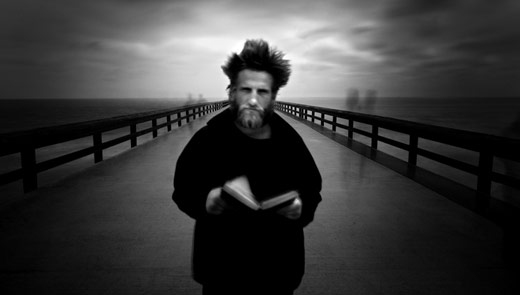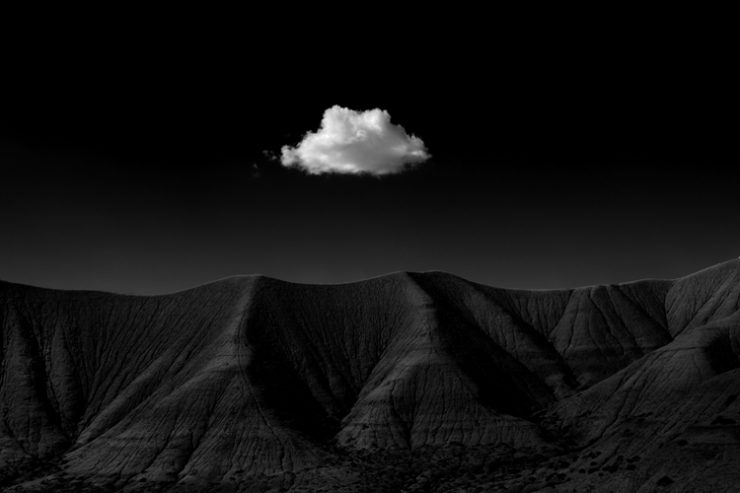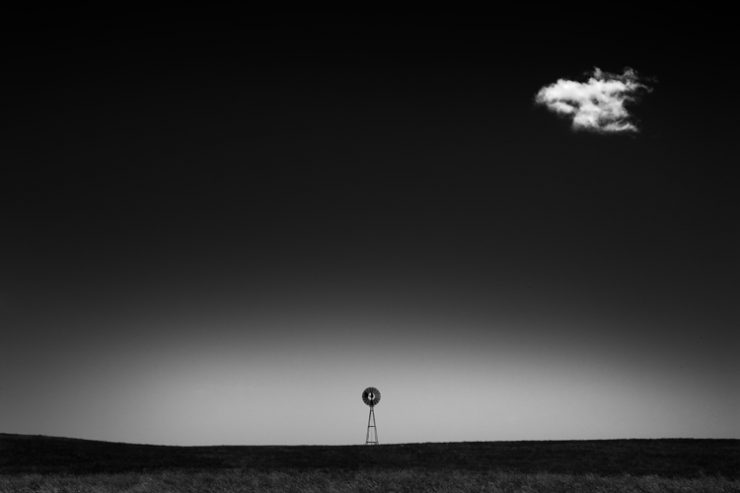MG: Some of your images, particularly in your Ceiling Lamp series, look almost like illustrations or graphics rather than photos. Do you use a different process to achieve that look, like HDR, or is that simply how they looked?

Cole: Some people say these look like Escher, but that’s just my dodging and burning. The dodging and burning in these ceiling lamps brought out the textures and shading. These things had to be really under-exposed because you have a glaring light bulb under them, so it takes a lot of dodging and burning. This is one that I have in my house…
MG: What about this one, with the skeleton? The shading makes it look like HDR.
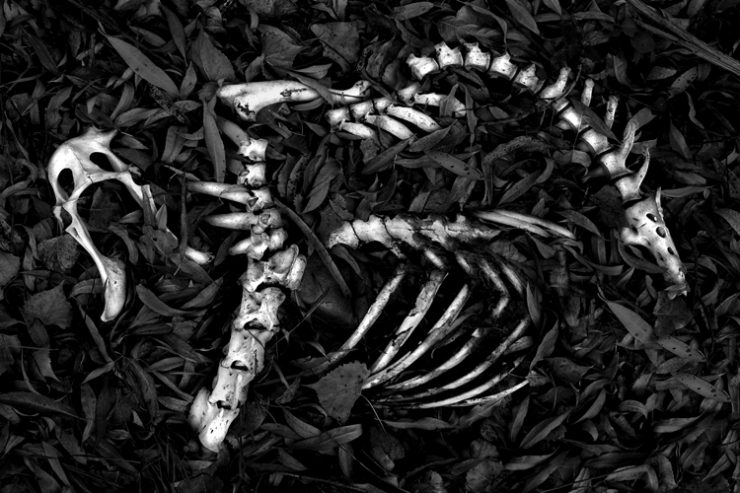
Cole: Again, just dodging and burning. I had to bring down the leaves with a lot of burning to get that contrast.
MG: That may be what I’m seeing, where the dodging and burning has overlapped onto the bones. Frequently, HDR produces a “halo” effect that looks similar.
What projects are you working on now?
Cole: I’m still working on the Fountainhead series a little, and on the Harbingers; they’re so difficult to obtain that I’ll probably be working on those for years. But I’m really ready for a new project, and I haven’t found one yet that gets me excited.
MG: Who are your influences, which currently working artists do you like?
Cole: Growing up, Ansel Adams was my ‘hero’. Later in life, and even to this day, Weston has become a bigger influence; I love his work, but I read his day-books constantly for a source of inspiration, for the process… and i just get so inspired when I read those Mexico years and what he went through, so he’s a huge influence.
One particular influence who got me started down the path of long exposures (which we didn’t discuss a whole lot today, but I’d say 75% of my work these days are long exposures) was Alexey Titarenko, a Russian, who did this series of long exposures of dreary Moscow settings, and that got me really excited about 8 years ago.
I credit him with my being able to shoot “The Ghosts of Auschwitz & Birkenau”, because I had been so practiced in long exposures. I went on this tour, a one hour tour at Auschwitz, and I wasn’t planning on photographing. I guess I had in my mind that it would be disrespectful. But this sudden inspiration hit me, not to photograph the camps as dead, empty places, not as historical museums, but as a place where the spirits of the “lived” still haunted the camp. So in 45 minutes, I got these 15 images using his techniques.
MG: How do you find a new project?
Cole: I keep a list of ideas, but in truth, I’ve never taken one of those ideas and executed it. The ideas that I’ve got… I’ve always stumbled upon them. The “Lone Man” series, I was shooting long exposures of the coast, and these tourists would move into my frame, and instead of yelling at them I thought well, at least I’ll make a test exposure… so when they move out of the way, I’ll be ready. So I do this test exposure, and I notice something…. the guy is standing still for 30 seconds.
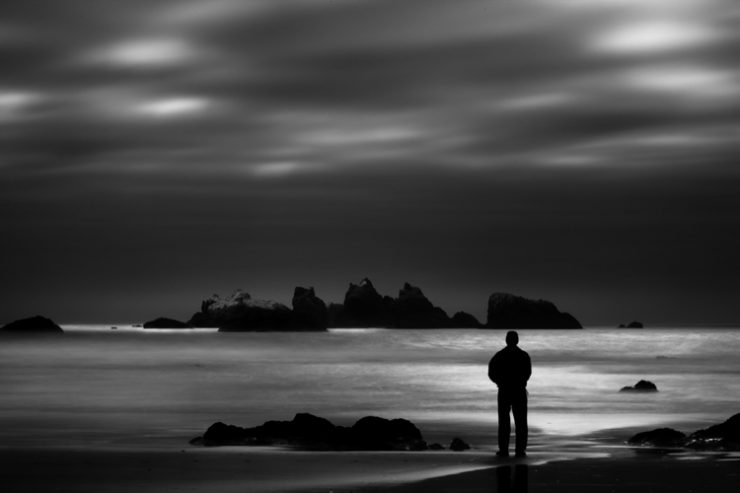
And then I start noticing a lot of people are doing that, and I notice this phenomenon that when you stand at the edge of the ocean, and you contemplate how big the ocean is, then you start contemplating how big space is, and you start contemplating things like eternity and can’t help but ask yourself, “How small am I, compared to this? Do I make a difference? Do I die and that’s it?” You start asking these deep questions. So, I started noticing then when people stand at the edge of the ocean, they start contemplating things much bigger than themselves… so I started the series, and it was all by accident.
Or the ceiling lamps. I was standing in line at a hotel in Akron Ohio, waiting to check out, and I look up and see this lamp. And I said, wow… that looks so different from standing right below.
The Harbinger. I’m out with my son, we were photographing those hills in Harbinger #1, but there were no clouds. It was like 110 degrees in the middle of Utah, we’re packing up and heading back, and I see this one cloud, moving very quickly, and I’m looking at the hills, and I’m thinking “In a minute or so, that cloud’s going to be right over those hills”, so I ran up the hill, set up, and took two shots, one of which worked. And I thought, “I’ll never see a single cloud again, this will never make a series”, then all of a sudden, wherever I go, I’m seeing lone clouds.

